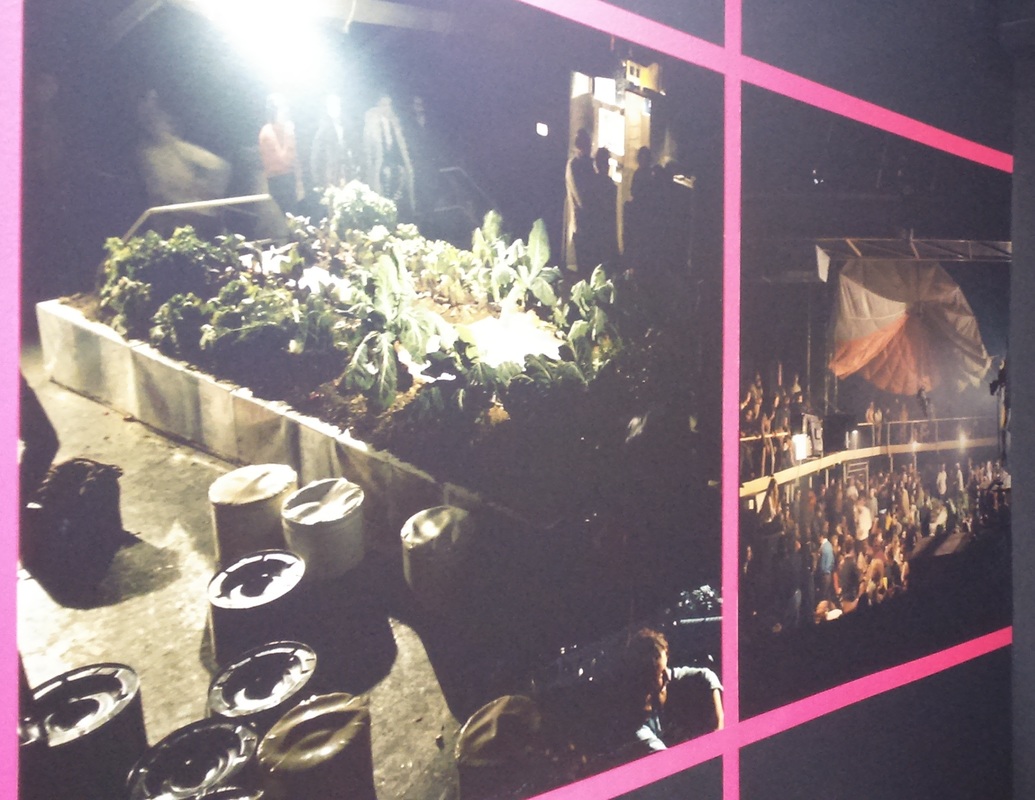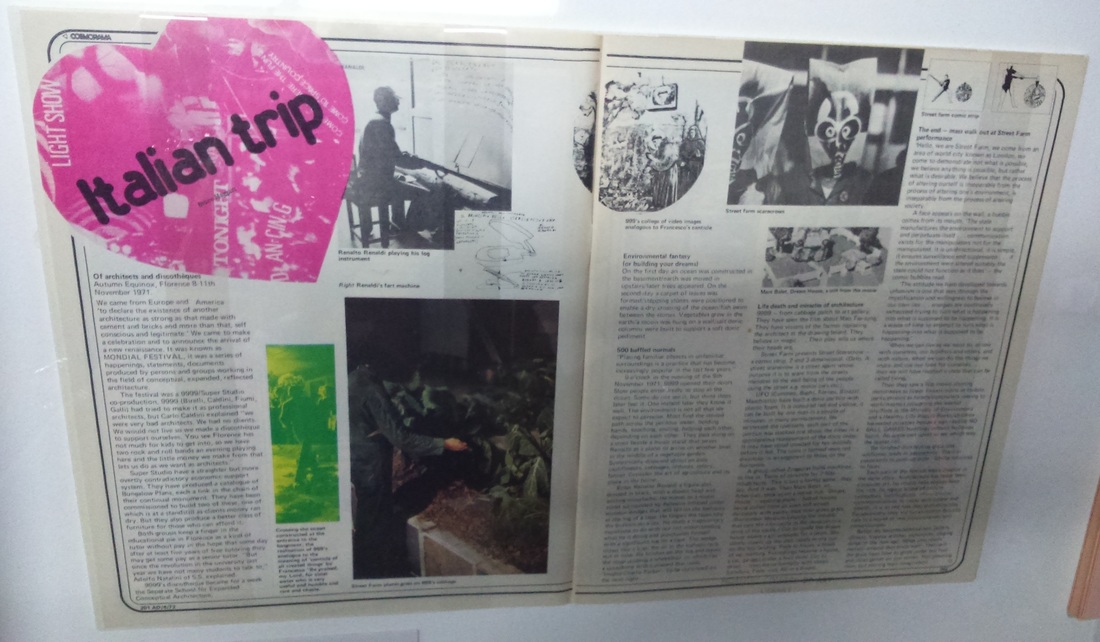|
"In the daytime Space Electronic housed S-Space, an experimental architecture school. For 1971’s Mondial festival, organised with Superstudio, [Gruppo] 9999 flooded the lower level and put a vegetable garden on the dance floor, expressing their desire to unite nature and technology." Catharine Rossi
Vegetable Garden House at Space Electronic, pictured above and below, on show at Radical Disco: Architecture and Nightlife in Italy, 1965 - 1976, Institute of Contemporary Arts, Dec 8th 2015 - Jan 10th 2016. 'A Very Short History of Radical Design' in the Radical Disco programme reads "Many progressive architects, designers and artists identified with the need for social change in this charged political climate. According to Emilio Ambasz, curator of the seminal exhibition on Italian design at New York's Museum of Modern Art in 1972, these designers were "Unable to reconcile the conflict between their social concerns and their professional practice". They used design as a means to challenge the bromidic political landscape and to combat their profession's modernist and market orientation."
0 Comments
Your comment will be posted after it is approved.
Leave a Reply. |
AuthorMelissa Sterry, PhD, chartered design scientist, systems theorist, biofuturist, and serial founder inc. Bionic City® Bionic CityAsking the question "how would nature design a city" since 2010.
Archives
October 2023
Categories#bionics
#biotech #biodesign #bioscience #biomimetics #biotechnology #bioengineering #bioinnovation #bioaesthetics #biorevolution #bioenterprise #biosystems #biocreative #biofuturism #biofutures #biocentric #biofacture #biotecture #biovation #biofiction #biourban #biocities #biolab #bioart #STEM
#STEAM #STEAMED #STEMcomms #STEAMcomms #STEAMEDcomms © Bioratorium Limited & Melissa Sterry
2021 All Rights Reserved |


 RSS Feed
RSS Feed

